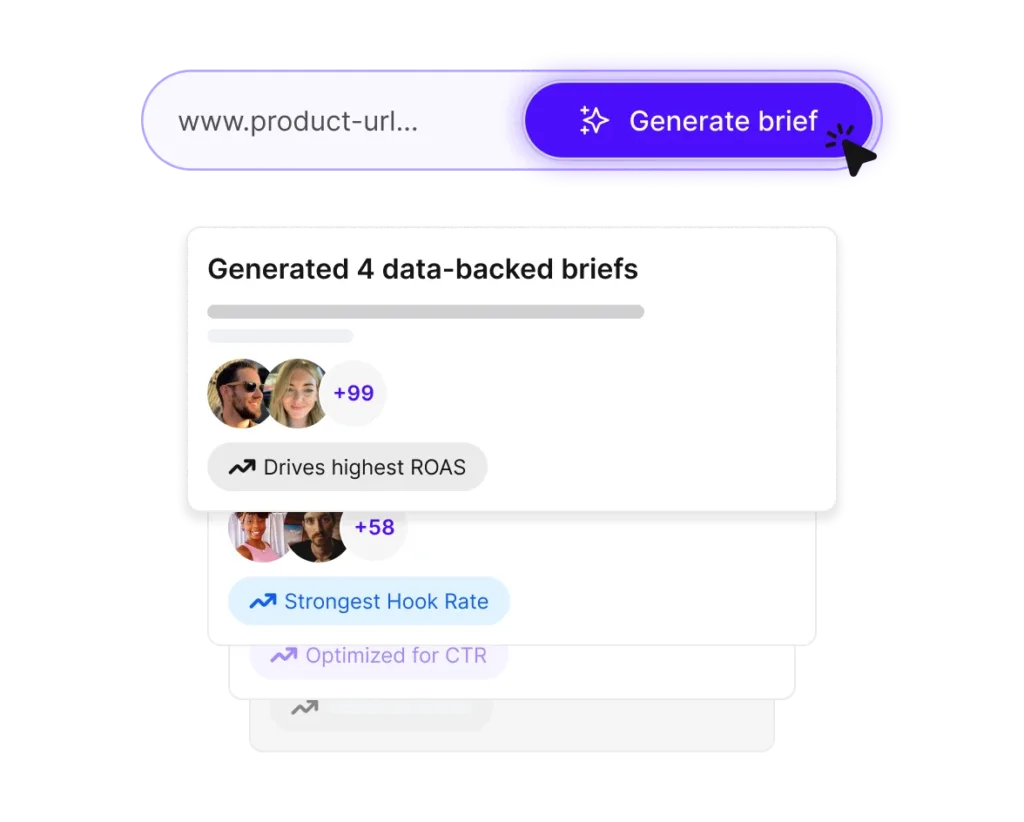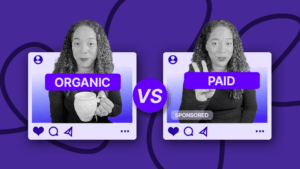Mastering UGC Scripts: Best Practices, Templates & Creator Insight
Passionate content and search marketer aiming to bring great products front and center. When not hunched over my keyboard, you will find me in a city running a race, cycling or simply enjoying my life with a book in hand.

In 2025, brands are facing the most competitive short-form video landscape yet. With attention spans dwindling and content saturation at an all-time high, capturing audience interest in the first three seconds isn’t optional – it’s essential. That’s where UGC scripts come in.
More than just a set of talking points, these scripts provide a strategic roadmap for creators to deliver content that’s both authentic and aligned with brand goals. By following tried-and-true formats, like Hook → Problem → Solution → CTA, UGC scripts boost message clarity, streamline production, and drive better outcomes across TikTok, Instagram Reels, and beyond.
When done right, UGC scripts remove guesswork for creators while leaving space for their natural voice. That sweet spot between structure and spontaneity is what fuels retention, trust, and conversions.
TL;DR:
- UGC scripts are structured yet flexible outlines that help creators deliver branded content that feels authentic, not forced.
- The most effective script format is “Hook > Problem > Solution > CTA,” optimized for short-form video platforms like TikTok and Reels.
- UGC briefs and scripts work hand-in-hand—briefs align on goals, while scripts translate them into creator-friendly storytelling.
- Based on Billo’s internal experience with creators, the top five things they want from brands are: clear briefs, fast communication, creative freedom, realistic expectations, and mutual respect.
- Best practices include writing for authenticity, matching scripts to platform norms, and allowing improvisation to boost engagement.
- Scripts should be modular and adaptable across verticals—from beauty to fitness to SaaS.
- Always test and iterate scripts based on performance data like hook retention and watch-through rates.
What is a UGC Script?
A UGC script is a guide that helps creators produce user-generated content aligned with a brand’s message while keeping their delivery authentic and engaging. Unlike traditional ad scripts, these are often modular and flexible—offering a clear structure without dictating every word.
At its core, a UGC script serves two primary functions: structure and clarity. It outlines the video flow (e.g., intro, problem, solution, CTA), suggests visuals or tone, and highlights key talking points. This ensures that the creator stays on-brand without sounding scripted.
For creators, this structure is a launchpad. It provides enough guidance to avoid guesswork, while leaving room for improvisation and personality. For brands, it’s a way to scale content creation while maintaining quality and consistency.
The result? Content that feels real to viewers, meets brand objectives, and performs better across platforms.
Common UGC Script Formats
While UGC scripts can vary widely, the most effective ones tend to follow a proven structure:
Hook → Problem → Solution → CTA
This format is designed for platforms like TikTok and Instagram Reels, where grabbing attention early and delivering value fast is crucial. Other successful formats include:
- Testimonials: Personal stories or product reviews that feel like word-of-mouth recommendations.
- Unboxings: Showcasing product packaging and first impressions to build excitement.
- Day-in-the-life vlogs: Casual, narrative-style content that integrates the product into real routines.
The key to all formats? Modularity. Brands and creators often use building blocks like intro, benefit highlight, and CTA to adapt scripts for different styles and time constraints.
Short-form platforms also demand fast pacing. Strong UGC scripts kick off with an eye-catching question or bold statement in the first 3–5 seconds. This is the critical window where most viewers decide whether to keep watching.
UGC Briefs vs. UGC Scripts
Before a creator can craft a compelling video, they need clear direction and that starts with a solid UGC brief. A brief is a pre-production document that outlines everything a creator needs to know: goals, key messages, preferred tone, deliverables, and timeline.
Well-crafted briefs prevent rework, missed deadlines, and mismatched content. They also foster stronger brand-creator collaboration leading to better output, faster.
How Scripts Emerge from Briefs
While briefs define the “what” and “why” of a video, UGC scripts translate that into the “how.” A good brief sets the foundation; the script brings it to life.
Creators use the brief’s guidance to develop pacing, hooks, transitions, and CTAs that align with brand goals. Think of the brief as the strategy doc and the script as the execution plan.
To streamline this process, many brands provide script templates alongside briefs, especially for high-volume campaigns or platform-specific content. Templates reduce ambiguity and help creators focus on performance-driven storytelling.
UGC Script Best Practices
1. Writing for Authenticity, Not Perfection
The best UGC scripts don’t sound like scripts at all. They sound like real people, speaking naturally. That’s because authenticity (not polish) is what drives performance. Think everyday language, relatable moments, and genuine tone.
Over-scripting kills trust. When a creator sounds like they’re reading a teleprompter, viewers tune out. Instead, offer structure (like hook/problem/solution/CTA), but leave room for creators to interpret and personalize their delivery.
Real-life examples and unscripted phrasing create a conversational vibe that resonates far better than marketing jargon. Your script should feel like a suggestion, not a speech.

2. Matching Script to Platform (TikTok, IG Reels, etc.)
Each platform has its own rhythm, and your script needs to keep up. On TikTok and Instagram Reels, the first 3 seconds are make-or-break. Start with something scroll-stopping: a bold claim, a surprising question, or a relatable truth.
Consider these platform nuances:
- TikTok loves fast pacing, raw energy, and trending sounds.
- Instagram Reels leans more curated. Still personal, but a touch more polished.
- YouTube Shorts can handle slightly more context and structured storytelling.
And always tailor your CTA to the platform. “Link in bio” hits on TikTok, but “Swipe up” fits Reels. Match your message to viewer behavior to drive better results.
UGC Script Templates and Examples
The gold standard for UGC scripts is simple but powerful: Hook → Problem → Solution → CTA. It’s quick, punchy, and perfect for short-form platforms like TikTok and Instagram Reels.
Here’s how that structure plays out across different verticals:
🧴 Skincare Example
- Hook: “I used to think my skin would never clear up…”
- Problem: “Everything I tried either dried me out or broke me out.”
- Solution: “Then I found [Brand], and it completely changed my routine.”
- CTA: “Try it for yourself—link in bio.”
💪 Fitness Supplement Example
- Hook: “I never had energy for evening workouts…”
- Problem: “By 5 PM, I was totally drained, even if I hadn’t trained that day.”
- Solution: “I started using [Product] pre-workout—total game changer.”
- CTA: “If you’re low energy too, grab yours at the link.”
🍽️ Meal Delivery Example
- Hook: “Cooking after work? Yeah, right.”
- Problem: “I used to waste so much money on takeout because I was too tired to cook.”
- Solution: “Now I just heat up [Brand] meals in 3 minutes—healthier and cheaper.”
- CTA: “Want to skip takeout this week? Link in bio for 30% off.”
How Brands Can Customize by Vertical
While the base structure for scripts is the same, different industries call for different scripting strategies. This way you are focusing on what is important to the target audience instead of producing the same angle over and over.
- Beauty: Focus on transformations—before/after shots, emotional reactions, and relatable pain points.
- Fitness/Wellness: Challenge formats or time-based testimonials (“30 days with X…”) work best.
- Tech/SaaS: Lead with functionality. Show how the product solves a problem with minimal friction.
- Ecommerce: Highlight ease and speed—think unboxing, usage demos, and delivery experience.
Find more about the best performing UGC hooks from Billo research.

What Billo Creators Want from UGC Scripts
If you want to create better UGC scripts, start by understanding what creators really care about. Based on direct feedback from Billo’s creator network, the following five themes stand out:
- 🔍 Crystal-clear briefs
The #1 ask from creators is clarity. They want to know exactly what’s expected, no hidden agendas or vague goals. A brief that spells it out sets the stage for success. - 💬 Fast, friendly communication
Timely responses make a big difference. When brands communicate quickly and respectfully, creators stay motivated and projects move faster. - 🎨 Creative freedom
Overly prescriptive scripts stifle creativity. The highest-performing videos come from creators who are trusted to interpret the brief in their own voice. - 🕒 Realistic expectations
Asking for a 60-second script in a 30-second slot? That’s a recipe for frustration. Creators appreciate when timelines, scope, and compensation align clearly. - 🤝 Respect and collaboration
Creators aren’t vendors, they’re partners. Treating them with respect builds long-term relationships and leads to higher-quality content.
How to Align Your Process to Match
Meeting these expectations doesn’t require reinventing your workflow. Just optimize what you already do:
- Use templated briefs with room for flexibility. Provide structure without boxing creators in.
- Streamline communication with tools like Slack or Google Docs to avoid approval bottlenecks.
- Align on scope, pay, and deadlines from the start to avoid friction later.
Summary: Creating Scripts Creators Want to Follow
The secret to high-performing UGC scripts isn’t perfection, it’s flexibility. Creators thrive when they’re given structure without rigidity. When you offer clear direction but let them bring their own tone and delivery, you get content that’s authentic, engaging, and effective.
Great scripts start with even better briefs. Together, they reduce confusion, speed up production, and elevate ad performance. But they work best when brands treat creators as collaborators not just executors.
So here’s your move: Stop sending robotic talking points. Start building smart, flexible frameworks creators actually want to work with. That’s how you scale content that converts.

Looking to create the best performing briefs? Billo IQ just launched an automated brief writing tool – Enter your product URL and get custom scripts based on your product and the best performing tactics in your industry. Give it a try today.
FAQs
What’s the ideal length of a UGC script?
Scripts should be built for 30–60 second videos. Aim for 75–120 words for a 30-second delivery. This keeps pacing natural and prevents rushed or robotic reads.
Can you reuse UGC scripts across creators?
Yes, but always adapt the tone, phrasing, and visuals to suit each creator’s style. Modular scripts—built around flexible segments like hook/problem/solution/CTA—are especially effective for scalable reuse.
Should creators improvise or follow the script exactly?
Let them improvise. Scripts should serve as guides, not strict rules. The most engaging content feels spontaneous, and creators deliver better results when they can make the words their own.
How do you know if your script is performing?
Track metrics like hook retention (first 3–5 seconds), watch-through rates, and CTA clicks. If engagement drops early, revise your hook. Data should guide script iteration.
SEO Lead
Passionate content and search marketer aiming to bring great products front and center. When not hunched over my keyboard, you will find me in a city running a race, cycling or simply enjoying my life with a book in hand.

Authentic creator videos, powered by real performance data
22,000+ brands use Billo to turn UGC into high-ROAS video ads.
Common UGC Brief Mistakes Brands Still Make in...
A vague or overpacked brief derails campaigns before they start, [...]...
Read full articleOrganic UGC vs Paid UGC: How Top Brands Drive Gr...
More brands are turning to user-generated content (UGC) to fuel [...]...
Read full articleOrganic UGC: How to Turn Native Creator Posts in...
Short-form feeds spotlight content that feels natural, not like ads. [...]...
Read full article



